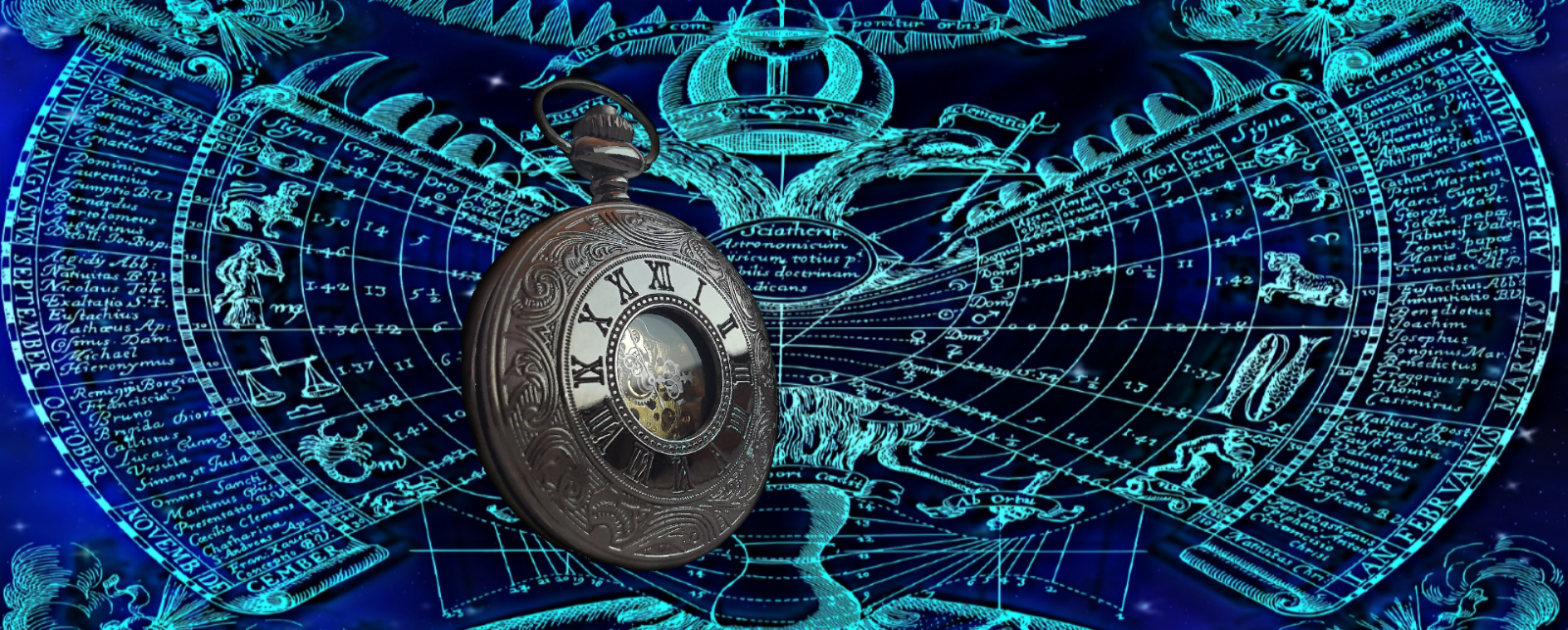Clocks and Calendars on Synergasia
There is no universal method of telling time of day, or the date on Synergasia. There isn't even a universal standard definition of things like "week" or "month". You are free to decide how to set up your own region's calendar.
The Astronomical Facts
But while the terms mentioned above may not be defined, there are several astronomical realities that do apply to all of Synergasia. These are:- There is a single yellow sun (very much like our Sol). Synergasia revolves around this sun in an elliptical orbit once every 360 days.
- Synergasia's axis tilt with respect to its orbital plane is exactly 90 degrees. This means:
- The seasons in the northern hemisphere and southern hemisphere are identical, not "opposite" like they are on Earth.
- The sun rises and sets at the same time every day all year long. (In earth terms, sunrise is at 6AM, sunset is at 6PM whether you are at the equator or just below one of the poles.
- There are seasons, but they are dependent on the elliptical orbit and distance from the sun, not on axial tilt.
- There are two moons in the sky above Synergasia. They have different orbital periods, and both have orbits that are slightly tilted off the planet's orbital plane. The two have different tilts. This means that even when both are in "full moon" phase, they may be a distance apart in the sky. Only occasionally do they line up for solar or lunar eclipses.
- The smaller, faster moon orbits Synergasia so that 28 days pass between successive "full moon" phases. This moon is a deep, rusty red in color and does not shed much light if it the only moon in the sky. Every 2 years, orbits align so that this moon eclipses the sun, but since it is smaller, the result is an "annular" eclipse making the sun look like a bright white eye with a black pupil. It is eclipsed by Synergasia twice a year; on these nights the deep red moon appears to "wink out of the sky".
- The larger, slower moon orbits Synergasia so that 72 days pass between successive "full moon" phases. This moon is a pale yellow color and is approximately the size (in the sky) of Earth's moon. It sheds light at night much as our moon does, though the pale yellow color may tinge things interestingly in the darkness. This moon eclipses the sun once every 7 years. Because its apparent size is the same as that of the sun, the result is the "corona-visible" eclipse that we all ooh and ahh over. This moon is eclipsed by Synergasia (lunar eclipse) once a year; during this event the moon's color fades to a red that resembles that of the smaller moon.
- Every 21 years, the phases of the two moons and the geometry of their orbital tilts combine to produce a "double solar eclipse". During this event, the smaller moon appears to be absorbed by the larger (both will be black disks in the sky) even as it is covering the sun. The smaller moon will then emerge as the sun emerges as well.
- Every 1512 days (4.2 years), the phases of the two moons and the geometry of their orbital tilts combine to produce a "double lunar eclipse". During this event, the red moon looks like a pupil in the pale yellow eye.
Seasons of the Year
Because of the elliptical orbit, there are seasons on Synergasia - at least in the regions away from the equator. The equatorial region is always "tropical warm"... Jungles and hot deserts will be found in this band. In the temperate zones, there will be warm summers and cold winters, with the temperature ranges shifting higher or lower depending on proximity to the equator or poles. Keep in mind thought, that unlike Earth, you will not have "short days" in winter and "long days" in summer -- day and night are equal all year long. The concepts of "equinoxes" and "solstices" do not exist.Weeks and Months
But we picked our astronomical numbers to give you a lot of options on defining weeks and months if you want them. Feel free to select one or more of these, or create your own. Whatever works in your slice of the world!Our Earth concepts of weeks and months are related originally to lunar cycles, but then they got messed with to fit a solar cycle. Pure lunar calendars tend to have 28 day months to match lunar cycles. Those are divided into four seven day weeks. We have given Synergasia a 28-day moon, so you have a basis for a 7-day week if you want it. You could also use the other moon as a basis, but a 72 day cycle would probably lend itself to weeks of 6, 8, or even 12 days.
Alternatively, you can look to the solar cycle. A 360 day year can break into twelve 30-day months (with 5, 6, or 10 day weeks), or ten 36-day months (6, 9, or 12 day weeks), or even Nine 40-day months (5, 8, 10 day weeks). You may wish to base your choice on the night sky - a zodiac for your culture. Using the examples above, you would have a zodiac with 12, or 10, or 9 constellations that span the astronomical equator and cycle throughout the year in union with the sun.
A hybrid approach works too - just like we have here on Earth! We have 7-day weeks that derive from a lunar focus, but we stick 30-day (or 31... or 28... or 29-day) months over the top. You can do the same thing if you wish.
Finally, an approach that would probably appeal to the sci-fi crowd more than the past-era-fantasy crowd would be to ignore this issue entirely, and just work a "stardate"-like calendar. ("It is the 143rd day of the year 2792").


Comments